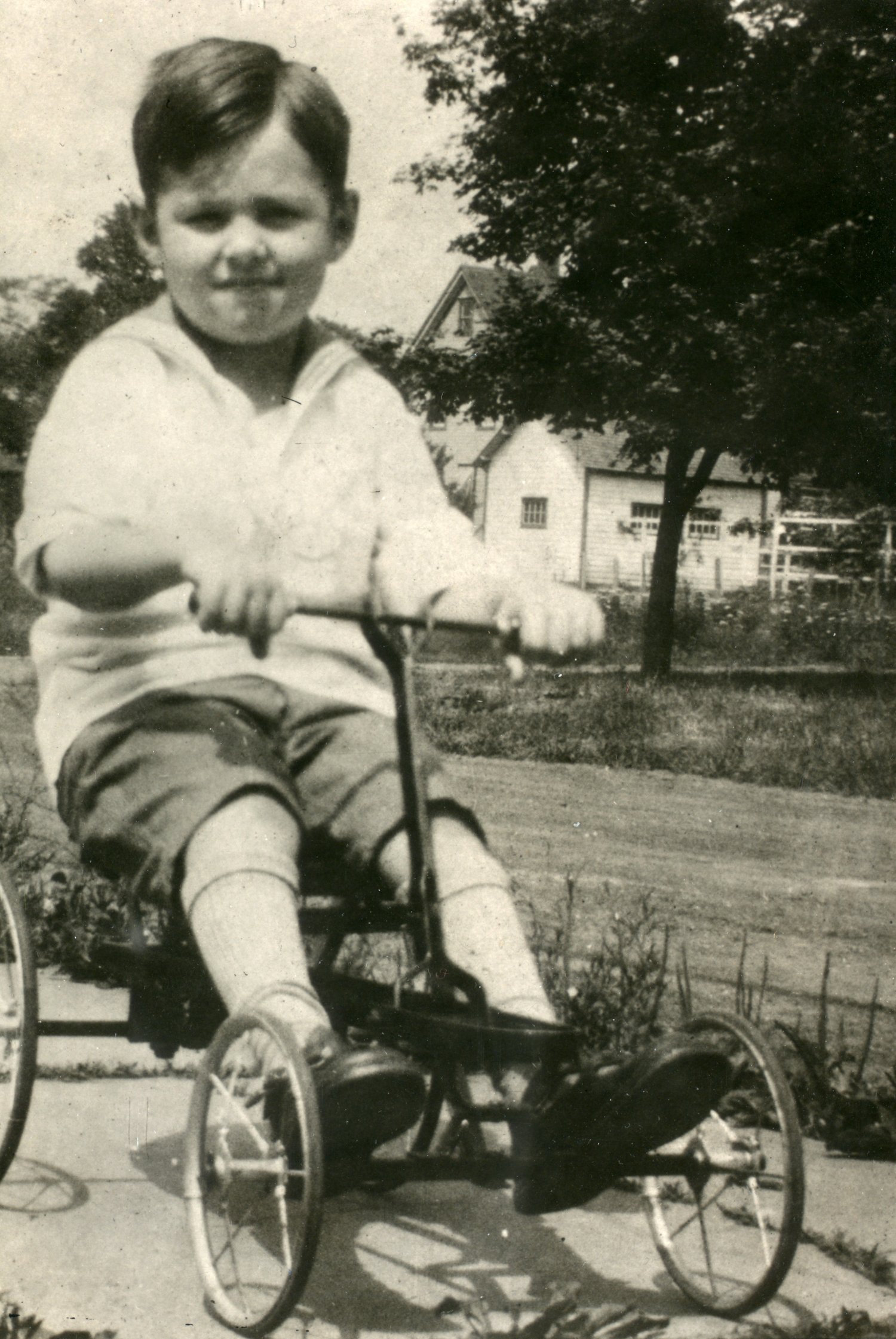Ted “Teddy” Ryder (1916 – 1993)
Theodore Ryder, or Teddy as many knew him, was one of the first patients to be treated with insulin by Frederick Banting.
By all odds, diabetes would have ended Teddy’s life before it even began. Instead, he was able to live a long and normal life – a feat made possible by the ground-breaking discovery made by Banting and his team in Toronto.
Teddy was born in Keyport, New Jersey in September 1916 to Mildred and Earle Ryder. His mother described him as a “frisky child”. Doctors diagnosed Teddy with diabetes mellitus when he was three years old, and put him on a strict diet of 500-600 calories a day to help manage his condition despite his young age. At the time, this diet was the only method that allowed people with diabetes to live after diagnosis – and even then, for only six to twelve months. By 1922, the once “frisky child” was a frail boy who weighed 26 pounds and was unable to walk on his own.
In June of that year, Frederick Banting and his student Charles Best, along with James Collip and J.J.R MacLeod, successfully demonstrated insulin as an effective treatment of diabetes. Upon hearing the news that Banting was launching insulin trials, Teddy’s uncle Dr. Morton Ryder wrote to the Toronto doctor to have his nephew treated as part of these trials involving Canadian and American patients. Banting initially refused as he only had enough insulin to treat his seven patients and told him to bring Teddy in September instead. However, when Dr. Ryder replied that Teddy was unlikely to survive by then, Banting acquiesced and agreed. Shortly after, Mildred and her son would board a train to Toronto to personally see Banting. On July 10, 1922, Teddy received his first dose of insulin and, within two weeks, he slowly regained his strength and weight. By October of the same year, he was strong enough to go back to his home and his family in New Jersey and continued his treatments there.
After returning home, Teddy wrote to Banting: “Dear Dr. Banting, I wish you could come see me. I am a fat boy now and I feel fine. I can climb a tree. […] Lots of love from Teddy Ryder.” He would regularly write letters to Banting until the doctor’s death in 1941.
Teddy would go on to graduate from Cornell University and eventually settled in Hartford, Connecticut as a librarian. For the rest of his life, he did not suffer from any serious consequences of diabetes. By 1993, at the age of 76, Teddy died from heart failure.
Though Teddy may not be his most famous patient, Banting fondly remembered Teddy for his “strength and fortitude” throughout his insulin treatment. Shortly before his death, Teddy attended an exhibit at the University of Toronto honouring the discovery of insulin in 1990. In front of a crowd, Teddy showed photos of himself before and after insulin treatment, revealing the miracle of insulin in transforming the lives of people with diabetes.
— Written by Michael Limmena

